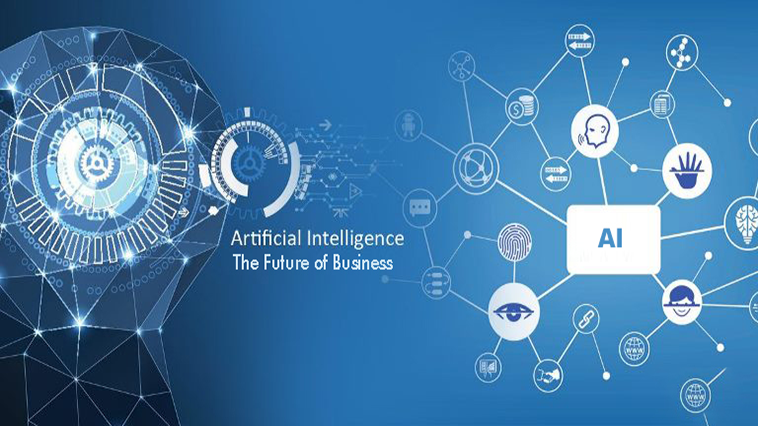Artificial Intelligence (AI) has become very popular in recent years. Earlier AI used to be trending for expertise but now the scenario is changed it is also prevailing in IT sector. And many people are attracted by the growth found in AI field.
Here are 10 popular frameworks for that are used for Artificial Intelligence:
1. TensorFlow:
TensorFlow is an open source software developed by Google Brain team./v. It is used to carry out numerical computations and is also useful in machine learning. This framework can compute on any CPUs, GPUs, TPUs or any desktop or edge devices. One of the main benefits is it uses computational graph abstractions. Many popular companies such as Snapchat, Airbnb, Intel, etc. use TensorFlow. It provides Python, C++, Java, Go, Haskell and Rust APIs; this can be considered one of the best feature of TensorFlow.
2. Apache SystemML:
Apache SystemML has got the most favorable workplace for machine learning using large data. It also has the abilities to run on top of Apache Spark. And thus it also scales the data and then determines whether to run your code on Apache Spark cluster or drive. It uses some specific machine learning constructs that make it easier and this makes data scientists more productive. It also includes linear algebra and statistical primitives.
3. Caffe:
Caffe is a deep learning framework. It is built with 3 key points keeping in mind: expression, speed, and modularity (degree of system component separated and combined). It is recommended because it helps in deep learning architecture including image classification and image segmentation. It has the speed that processes 60M images per day and is also considered as one of the fastest convent implementations.
4. Apache Mahout:
Apache Mahout is a distributed linear algebra framework, developed by Apache Software Foundation. It is also a mathematically expressive Scala DSL designed so that data scientists, mathematicians, and statisticians can quickly implement their algorithms. The main aim of Apache Mahout is to turn big data stored in HDFC (Hooped distributed file system) in big information with the help of data science tools. And this process is to be done faster and easier.
5. OpenNN:
OpenNN (Open Neural Network Library) is an open source class library that implements neural networks. It is written in C++ programming language. Any number of non-linear processing units for supervised learning (machine learning having the function of an input-output pair) is implemented by this library. Thus deep architectures are allowed to design neural networks with the help of universal approximation properties.
6. Torch:
The torch is an open source machine learning library; and also has scientific computation framework that supports GPUs. It has a fast scripting language, LuaJIT and is easy to use and efficient. It also possess the feature of having underlying C/CUDA implementation. It provides an N-dimensional array which supports indexing, resizing, transposing, etc. It also provides a neural network that is further divided into modular objects to share a common module interface. Torch is used by facebook, google, NYU, twitter and many other companies.
7. Neuroph:
Neuroph is written in Java and is object-oriented neural network framework. It provides GUI tools and Java class libraries to create and train neural networks. Neuroph is concerned with basic concepts of neural network such as an artificial neuron, neuron connection, neuron layer, transfer function, weight, etc. It also supports image recognition and this feature is available built-in. It is considered to be one of the best choices for beginners as you can work on the neural network without dealing with complicated theories and implementations. And thus it is easy to use and flexible neural network framework.
8. Deeplearning4j:
Eclipse deeplearning4j (deeplearning4j was contributed to Ecplise foundation in 2017) is a computation framework that supports deep-learning algorithms. It is written in Java and Scala. Its algorithms are used on distributed CPUs and GPUs that integrate on Hadoop and Apache Spark. Skymind (it is support arm of deeplearning4j and it is the combo of deeplearning4j and other libraries like TensorFlow and Keras) is a deep-learning framework that gives an easy and fast way to develop AI models. It contains many libraries in it such as ND4J, DataVec, JavaCPP, etc.
9. Mycroft:
Mycroft is considered to be world’s first fully open source AI voice assistant. Mycroft is so much advanced that it can be used for a science project to an enterprise software application. It can be run anywhere i.e. it can be a desktop, in an automobile or on Rasberry Pi. Adapt (an intent parser) is used to convert natural language to machine language. It uses modular structure so that users can extend it, freely-remixed it or can improve it.
10. OpenCog:
OpenCog is an open source that has initiated the aim towards artificial general intelligence (AGI) with broad vision at the human level or maybe beyond that. OpenCog prime is the architecture used in robot and virtual human form or virtual embody. It consists of graph database classified as AtomSpace. It covers all the cognitive task done by young human brain such as learning, action, cognition, memory, perception, self-modeling, etc.





